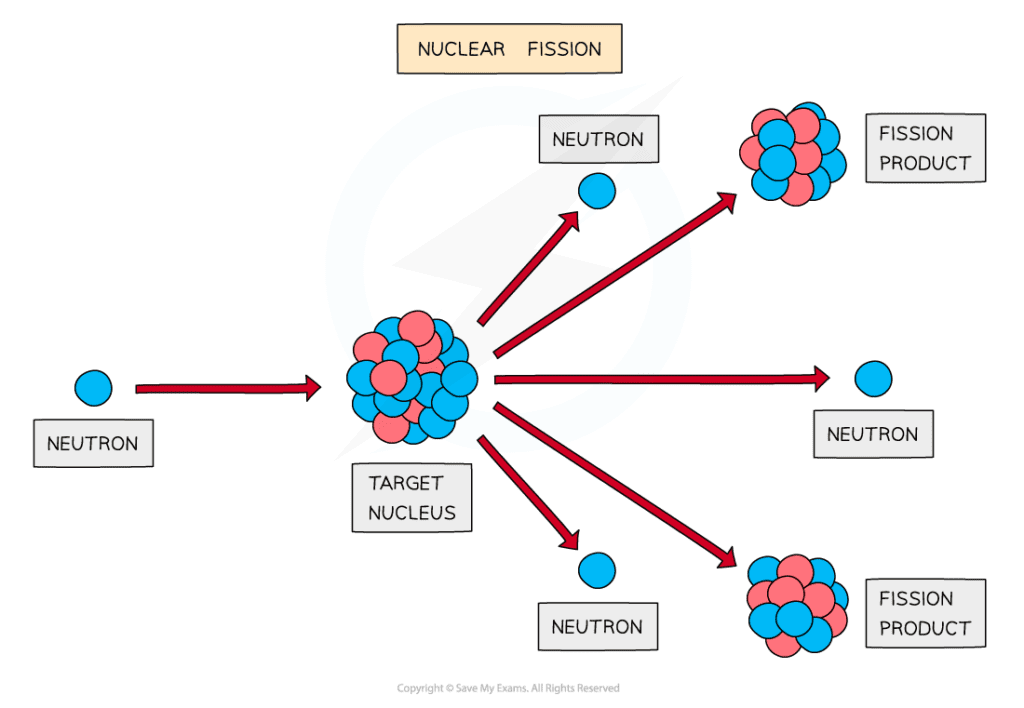Fission & Fusion (Cambridge (CIE) IGCSE Co-ordinated Sciences (Double Award)): Revision Note
Exam code: 0654 & 0973
Did this video help you?
Fission & fusion
Extended tier only
The processes of nuclear fission and nuclear fusion are the splitting and joining of atoms
Nuclear fission
Nuclear fission is defined as:
The splitting of a large, unstable nucleus into two smaller nuclei
During fission:
A neutron collides with an unstable nucleus
The neutron and the nucleus are the reactants
The nucleus splits into two smaller nuclei (called daughter nuclei) and two or three neutrons
The daughter nuclei and the neutrons are the products of the reaction
Gamma rays are also emitted
Nuclear fission process

A neutron is fired into the target nucleus, causing it to split
Nuclear fission of uranium-235

Large nuclei can decay by fission to produce smaller nuclei and neutrons with a lot of kinetic energy
Nuclear fusion
Nuclear fusion is defined as:
When two light nuclei join to form a heavier nucleus
Stars use nuclear fusion to produce energy
In most stars, hydrogen nuclei (light nuclei) are fused together to form a helium nucleus (heavier nucleus) and massive amounts of energy is produced
Nuclear fusion of hydrogen

Two hydrogen nuclei fuse to form a helium nucleus
Nuclear fusion requires extremely high temperature and pressure
So fusion is very hard to reproduce on Earth

Unlock more, it's free!
Did this page help you?